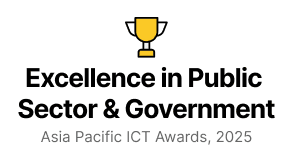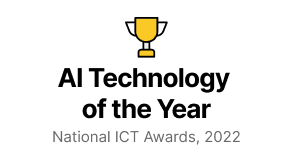2025-03-12
Data Masking and Data Anonymization
Data masking and data anonymization are two crucial techniques that can be used for protecting sensitive patient information in healthcare AI systems.
Data masking obscures identifiable details (like names and social security numbers) while preserving the data’s structure, making it suitable for internal testing and development.
Data anonymization, on the other hand, transforms or removes personally identifiable information entirely, ensuring that the data cannot be traced back to any individual—essential for external collaboration, research, and strict compliance with regulations.
The Importance of Privacy in Healthcare
Protecting patient data is fundamental to advancing healthcare AI. Data masking and anonymization techniques safeguard personally identifiable information (PII) and protected health information (PHI) across critical applications like medical research, telehealth, and diagnostic AI. By removing or obscuring sensitive details, these methods maintain compliance with HIPAA, GDPR, and similar regulations while enabling meaningful data analysis. When privacy remains a priority, healthcare organizations can confidently innovate, share insights, and improve patient outcomes—all without compromising public trust or legal obligations.
1. Tokenization
Tokenization substitutes sensitive information—like names, social security numbers, or patient IDs—with randomly generated tokens. While the tokens preserve the format or length of the original data, they have no direct meaning or link to the individual. This approach is particularly useful for sharing data with internal teams (e.g., development or testing) because the tokens maintain data structure without exposing private details.
For example, a hospital may replace a patient’s record number “ABC123” with a token “XYZ789” in the dataset it shares with a research department. Although the data can still be analyzed, no one can trace “XYZ789” back to the real patient record in the hospital system.
2. Format-Preserving Encryption (FPE)
Format-preserving encryption (FPE) encodes sensitive data while retaining its original format. For instance, a 16-digit credit card number remains a 16-digit string post-encryption, ensuring compatibility with existing systems and workflows. Thus, healthcare institutions can integrate encryption smoothly without needing extensive software or database changes.
For example, if a medical billing system requires a 10-character patient ID field, FPE transforms the ID into an encrypted 10-character code. The system continues to function normally, yet the data is protected from unauthorized disclosure or misuse.
3. K-Anonymity
K-Anonymity ensures that each record in a dataset is indistinguishable from at least “k−1” others. By grouping or generalizing certain attributes (e.g., age ranges, zip codes), personal identifiers become impossible to pinpoint. This method is especially valuable for population-level research, where large datasets provide insights without risking any individual’s privacy.
For example, instead of showing a patient’s exact age (e.g., 37), K-Anonymity might show an age bracket (e.g., 30–40). Consequently, at least k records share the same range, preventing any single person from being uniquely identified.
4. Differential Privacy
Differential Privacy introduces slight, random alterations—or “noise”—into a dataset to make it extremely difficult to identify individual records. While the noise preserves overall statistical trends, it guards against re-identification attempts, even when multiple data sources are cross-referenced.
For example, in a study examining hospital readmission rates, differential privacy might randomly adjust a few admissions in the dataset. These small changes don’t affect the overall accuracy of the analysis but ensure no one can confirm whether a specific individual was readmitted.
Why Safeguard Patients' Information?
Data privacy is crucial when adopting AI in healthcare, since sensitive patient information must be protected against unauthorized access and misuse. Regulations like HIPAA mandate strict standards for data handling, ensuring that personally identifiable information (PII) such as names and medical records, remains confidential. By implementing robust security protocols—such as encryption, secure data transmission, and strict access controls—healthcare organizations can harness AI’s transformative potential without compromising patient trust. Emphasizing the importance of compliance and accountability fosters a secure environment for AI-driven innovations to thrive, ultimately improving patient outcomes while respecting privacy rights.
1. AI-Powered Disease Diagnosis
Patients’ clinical records, lab results, and imaging data are analyzed by AI-driven tools to detect illnesses at earlier stages—all while preventing privacy breaches through data masking. Sensitive identifiers (e.g., names, dates of birth) are replaced or redacted, preserving patient confidentiality as the AI model pinpoints potential risks. Clinicians then receive only de-identified insights, enabling them to make data-driven decisions without accessing personal details.
For instance, in a cardiac unit, an AI-based system may flag high-risk cases of heart disease after automatically masking patient information. This approach boosts diagnostic accuracy, ensures privacy compliance, and maintains clinical focus on actionable results.
2. Remote Patient Monitoring
Wearable devices and home-based sensors continuously collect vital signs—like blood pressure, heart rate, and oxygen levels—and transmit them securely using data masking techniques. Identifiers are replaced with randomly generated tokens before analysis, preventing direct exposure of personal information. Clinicians monitor these anonymized readings and receive alerts if any values deviate from established norms, enabling swift intervention without breaching patient privacy.
For example, a Tele-health provider collaborating with a rural clinic can monitor anonymized blood pressure data in real time. If a critical spike is detected, an alert prompts urgent medical attention and the data can be transmitted using encryption, ensuring privacy and security.
3. Population Health Management
Aggregated, anonymized data from clinics, hospitals, and insurance providers provides large-scale health insights while maintaining patient confidentiality. By stripping out personal identifiers and grouping individuals into broader demographics—such as zip codes or age brackets—officials and analysts can spot trends, regional disparities, or emerging disease clusters without exposing any single patient’s identity.
For example, a state health department might aggregate anonymized diabetes data to see which areas require targeted interventions. In this manner, researchers gain actionable intelligence for allocating resources effectively while fully respecting patient privacy through robust anonymization protocols.
4. Medical Imaging
Radiology labs and research teams share images—such as X-rays, MRIs, or CT scans—by removing personal metadata and carefully redacting any unique markers that could identify a patient. This process might involve deleting embedded identifiers in DICOM files or pixelating distinguishing features to ensure patients cannot be identified based on image details. So that developers can safely use these images to refine AI diagnostic algorithms.
For instance, when training a new tumor detection model, it utilizes cleaned DICOM scans provided by a hospital’s radiology department. This process ensures compliance with HIPAA regulations and upholds patient anonymity while improving the software’s accuracy. By using this approach, we can make significant strides in AI-driven imaging technology without jeopardizing individual privacy.
Conclusion
Data masking and anonymization are essential for protecting sensitive patient information in healthcare AI systems. By obscuring or removing personally identifiable information, these methods ensure compliance with regulations like HIPAA and GDPR while enabling meaningful data analysis. Implementing robust privacy measures allows healthcare organizations to leverage AI for accurate diagnostics, personalized treatments, and efficient patient care without compromising patient trust or legal standards.






